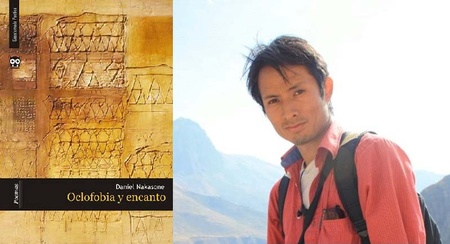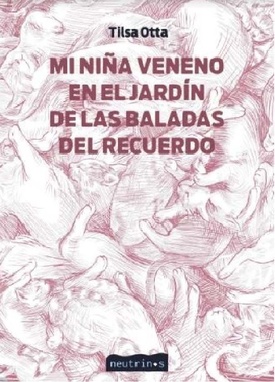Poetry is plastic. At least that can be deduced from some of the collections of poems that some Nikkei have published in recent years. Disparate editions, poems based on real events, self-published poets and loose verses on social networks also show the winds that carry poetic work towards new directions. The survival of some contests and awards emerges as one of the few incentives in the face of the pandemic crisis that has undermined the entire cultural sector in Peru.
“I think that, on the one hand, there is a lot of interesting contemporary production, but still insufficient parity in access to representation opportunities, as was seen in the case of the Guadalajara Book Fair . Furthermore, the Ministries of Culture and Education could improve and expand the scope of their cultural policies to promote reading and levels of reading comprehension,” says Eliana Otta , a visual artist and writer who says that when she was in school she read a book per week.
In 2020 the Young Poet of Peru Award was held, in 2021 Petroperú presented the XX Poetry Biennial and in 2022 the José Watanabe Award will be resumed, in poetry and short stories, which could not be convened for the previous year. Furthermore, in 2022, the publishing label Álbum del Universo Bakterial , founded by Arturo Higa Taira, editorial designer, will celebrate 20 years creating object books of great artistic quality and introducing new authors.

“The editorial proposal of the collection is that the books are creative readings that begin with poetry and end in poetry (…) I am also interested that the singularity of the writer also becomes unique with the publication of each book,” Higa said in an interview prior to the launch of six poetry collections in 2021, one more than those designed a year before, many of which have been mentioned in the lists of the best books by different critics and journalists, which shows that Peruvian poetry continues to grow .
Painting, language and poetry
Eduardo Tokeshi is an artist of undoubted international prestige, who in the midst of the pandemic decided to start a master's degree in Creative Writing at the Pontifical Catholic University of Peru (PUCP). In September 2021, he presented “ Sanzu / The Two Shores ”, to obtain his academic degree, a volume that includes stories and poems that “are the result of a personal exploration whose axis is language. I start from a premise that, I believe, no one disputes: memory is constructed and communicated through language; and mine, that of my childhood, was the Japanese language, which I heard from my parents and relatives.”
Tokeshi had already been revealing his poetic vein through his Instagram account , in which he alternated drawings with phrases and poems full of humor, tenderness, criticism and creative reflection. “Painter painted with passion but lost brushes for thinking”, “I am going to miss the noise of our hearts in the silence of our quarantine”, “Your hand sings when you draw” are some of his publications. “Continuing to paint and do things in the midst of this (in reference to the pandemic) is undoubtedly a privilege,” he said in an interview .
“My writing seeks to recover the language of childhood through the construction of my own dictionary/glossary composed of Japanese words, the bridge through which I transit to the terrain of childhood, identity and belonging.” To do this, he carried out research based on testimonies and photographs of his family environment and journalistic sources and archives on Japanese immigration to Peru. At the moment, the text can only be consulted in the PUCP library.
nonfiction verses

Daniel Nakasone is a mysterious poet. In 2011 he published Oclophobia and Charm (Casa Tomada) and disappeared. From Canada, where he arrived in 2013, this Nikkei, whose parents were born in Huancayo and who studied Communication for Development, says that he always had the intention of writing, not just poetry, but with a job that would give him time to dedicate to the creative process. . He remembers that it took him about five years to correct that first collection of poems, which had the influence of poets such as Jorge Eduardo Eielson, Domingo de Ramos and Roger Santibáñez, and he forgot about the subject.
“I don't like to reread what I write because it makes me want to continue correcting, so publishing was also like closing a chapter,” says Daniel, who at that time preferred to leave the collection of poems without presentation. “Doing poetry in Peru is a matter of vanity, it is not a business. I just wanted to have a post to pass on to friends or close people. I was in charge of distributing them myself,” he says. Some time later, he met a woman whose daughter suffered an accident and the story moved him.
“I thought about telling her story by weaving some ideas into a collection of poems as a conversation between mother and daughter. "As my daughter has a mental problem, schizophrenia, I tried to put myself in the shoes of a person who is losing his identity," he says of these experimental verses that he worked on for a long time until Riír backwards (Pakarina Ediciones, 2021) emerged, a book that is read from back to front and that seeks to follow the conceptual line of the Peruvian collective Hora Zero of the seventies.
“It is a book about searching. It is returning to the poetic origin of the words and defining the balance between daydreaming and the human," Carlos E. Luján Andrade has written for the back cover of the book, adding that "in each poem the images not only create, they also define and “they fight for meaning.” Daniel says he likes the interpretations given of this book, enjoying the ambiguity of its meanings.
His Peruvian and Japanese identity has also been a topic of controversy. He says that his grandfather, who came from Okinawa, married a Peruvian woman, which was frowned upon at that time. “He experienced a kind of discrimination, the same thing happened to my dad,” says Daniel. “I can say that 'I am a quarter Japanese', my grandfather was very humble, they were not well regarded by the Nikkei community of Huancayo, and I think I felt that and I became closer to the grandmothers, to the maternal side.” Now he feels uprooted from Japan and a little from Peru, although “the trip has made me more nostalgic,” he clarifies.
family album
Whether due to migration, the pandemic or quarantine, recent years have been affected by new dynamics that have influenced literary production. The case of the Otta Vildoso family is very peculiar. While Tilsa published, between 2020 and 2021, her first novel, an anthology of her short stories in English and has filmed experimental short films (in addition, her first collection of poems My poison girl in the garden of the ballads of memory was published in Argentina by Neutrinos), her sister Eliana presented a children's book and was in charge of editing Vocabulario Vital , in which she brings together a varied group of people dedicated to art, writing and social sciences in order to think of some words that are used to talk about life and nature.
These short prose pieces, on the path between reflection and poetry, include words like “body”, earth”, “regeneration”, “friendship”, “time” and “roots”, promoting an interdisciplinary dialogue between those who dedicate themselves to thinking, imagine and create. “It has given me great joy to connect people who, otherwise, would not have shared a space, being from very different places,” says Eliana, who has always had an inclination for poetry. “My love for poetry and writing always sneaks into my artistic work, where I often work with texts and stories, transforming oral stories into mixtures of images with prose or poems.”

While Eliana has had literary experiences such as editing the magazine Prótesis, at the PUCP, or the magazine Juanacha, with the collective La Culpable, and the magazine Bisagra; Her other sister, Almendra, the youngest of the three, presented in 2019 an illustrated collection of poems that she self-published (untitled), with a very pop design that includes stickers, tattoos and silkscreens with a tribute to the 100 years of “The Black Heralds.” , by César Vallejo, among pink flowers and other rare specimens.
Although poetry, publications and authors do not have a necessary blood brotherhood (but they do have Nikkei), there are some references that parade in the mouths of these creators who repeat themselves: the sentimentalism of José María Arguedas, the impudence of the poetry of Hora Zero and Vallejo himself. And also the desire to continue blowing inspiration, in the most varied forms, to the always controversial contemporary poetry.
© 2022 Javier Gaírca Wong-Kit







